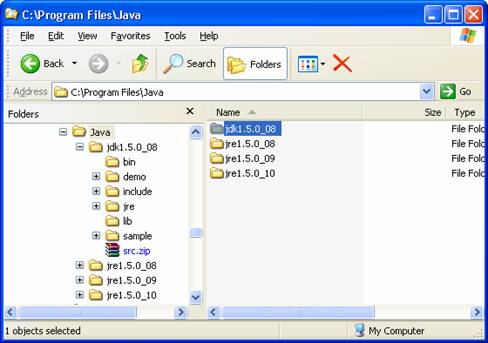

Download the official documentation in HTML format.To use a local copy of the documentation do the following: Installing a local copy of the documentation willĪllow you to browse the documentation while you are offline. The Java web site, where the online version of thisĭocumentation lives. Selecting this function opens a web browser and displays the APIįor the standard Java classes. How do I use a local copy of the Java API documentation?īlueJ has a menu item named "Java Class Libraries." in the Help Someone out there might just be looking for a translation into your language, too. If you do this, we would be very grateful if you would send us your language files for inclusion into the BlueJ distribution. Once you have done that, you can switch the Elvish language setting on as described above, using the property setting: Edit each of those files and translate all the texts in them to Elvish (keeping the format of the files as it is), then run the "native2ascii" utility that comes with the JDK to convert the files to the correct format. Then copy all the files out of one of the other language directories into your new language directory. In that case, make a directory named "elvish". Let's say you want to make a language setting for Elvish. Create a new directory for the language you want. These contain all the language dependent texts. In the lib directory, you will find subdirectories named "english", "german" and "swedish" and so on. We are looking for volunteers to do that. All labels, menus and dialogues have to be translated. How do I use objects from the standard library classes?įor other languages, you will have to make your own translation.
TEXTPAD 8 NO ADD JDK ARCHIVE
Use the Preferences Dialogue to add a library, and for accessibilityįrom a single project you can create or add an archive to a project's "+libs" directory. Users and all projects) you can use the "userlib" directory.įor user level access (all projects for a single user) you can So in summary there are three ways that custom class librariesĬan be made available inside BlueJ.
TEXTPAD 8 NO ADD JDK ZIP
YouĬan simply zip up the project directory and distribute the project. With any libraries that might be needed for it to function. This comes in handy if you want to distribute a project Is a convenient way to allow libraries to be loaded on a project-by-projectīasis. If a directoryĬalled "+libs" is found inside a project when it is openedīy BlueJ, then all the class libraries inside it will be on theĬlasspath (and therefore available for use in the project). The third way is via the "+libs" directory. These libraries will be available in all projects. Of the "Preferences" dialog also, but libraries cannotīe added to or removed from the userlib directory via the dialog. Libraries loaded via this second method are listed in the "Libraries" tab Naturally, to put a library in a "userlib" directory,Ī person must have write access to the directory. Same installed copy of BlueJ, so it can be used for instance inĪ lab environment to make the libraries available to all students. This is intended to be a "system wide" method to useĬustom class libraries as it will apply to all users using the Which is itself found inside the folder in which BlueJ was installed).Īny libraries placed in this directory will be loaded by BlueJ. The second way is via the "userlib" directory, foundĪt /lib/userlib (that is, inside the "lib" folder SimpleIO (not the simpleIO directory itself) as the library! Named "simpleIO"), choose the directory that contains In a named package directory structure (for example in a directory Select the jar file itself as the library. One small thing to look out for: if the classes are in a jar file, The selected libraries will now be available Then add the location where your classes are as a library path. The "Preferences" dialogue and select the "Libraries" tab. The first way is via the "Preferences" dialog. There are actually three ways of doing this in BlueJ. Without the need to copy all the simpleIO classes into every project. You may have your own package called "simpleIO" that In the same style as the Java standard libraries.

Sometimes, you may want to make your own libraries generally available


 0 kommentar(er)
0 kommentar(er)
